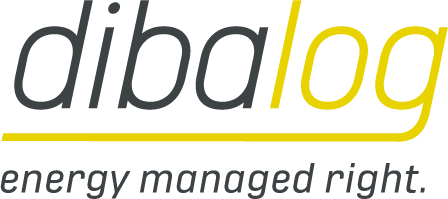Efficient demand management for a sustainable energy supply
Efficient demand management for a sustainable energy supply
How intelligent systems optimize energy consumption and reduce costs
Introduction to demand management
demand management as the key to modern energy supply
Efficient demand management is an indispensable component of a sustainable energy system. The aim is to control energy consumption in a targeted manner, avoid peak loads and thus increase grid stability. Particularly in energy-intensive industries, intelligent demand management helps to make production processes more economical and environmentally friendly.
By shifting energy demand to times of lower consumption, it is not only possible to reduce costs but also to make better use of renewable energies. Supported by intelligent technologies such as smart meters, energy management systems and automatic load control, real-time control is made possible - precisely, transparently and efficiently.
Why demand management is important for sustainability
Reducing CO₂ emissions and protecting infrastructure
A key objective of load management is to reduce the ecological footprint. The targeted smoothing of peak loads eliminates the use of inefficient reserve power plants. This improves the environmental footprint and reduces CO₂ emissions in the long term. In addition, the even load distribution results in less stress on grid components, which extends their service life and reduces maintenance costs.
demand management is therefore an important building block for companies that want to take responsibility - both ecologically and economically.
Fundamental principles of load management
Load shifting, load reduction, load forecasting and load control
The efficiency of load management is based on four central principles:
- Load shifting: Energy-intensive processes are shifted to times of low grid utilization.
- Load reduction: Overall consumption is reduced through process optimization and energy-efficient devices.
- Load forecasting: Consumption patterns can be identified and controlled with the help of data analysis.
- Load control: Consumers are regulated in real time to keep the grid stable.
These principles form the basis for a resilient and future-proof energy infrastructure.
Techniques and technologies in demand management
From smart metering to AI: digitalization creates new opportunities
The most important technologies include:
- Demand response: Consumers adapt their energy consumption to grid signals.
- Smart metering: Real-time data enables targeted control.
- Energy management systems (EMS): Automatic coordination of all energy flows in the company.
- Energy storage: Temporary storage of renewable energy for later use.
- Artificial intelligence: Learning systems predict energy consumption and optimize processes.
These digital tools help companies to use energy efficiently and design their processes flexibly.
Benefits of load management in the energy sector
Cost efficiency, security of supply and contribution to the energy transition
The advantages at a glance:
- Cost savings through optimized energy use.
- Grid stability through reduced peak loads.
- Integration of renewable energies through more flexible consumption.
- Extended service life of the infrastructure through even loads.
- Security of supply, even during peak loads or grid fluctuations.
These factors make demand management an essential instrument of modern energy policy - both at company and system level.
Examples of successful demand management
Practice-proven solutions from industry and gastronomy
- CTB Trattamenti Termici (Italy): Reduction of load peaks by 40% while maintaining production quality.
- Ferrum Edelstahlhärterei (NRW): Optimization of 180 consumers through EOS - awarded the NRW Innovation Prize.
- Gerster AG (Switzerland): Integration of non-controllable induction systems and stabilization of the regional grid.
- Landgasthof Läuterhäusle (Aalen): Combination of PV system, CHP and EOS for an energy self-sufficient restaurant with only 63 A grid connection.
These examples show: demand management works - across all sectors and economically measurable.
How companies can implement demand management
Seven steps for greater energy efficiency
- Analyze energy consumption
- Introduce smart metering
- ImplementEMS
- Use demand response programs
- Integrate energy storage
- Train employees
- Continuously monitor consumption
This structured approach enables companies of all sizes to implement demand management successfully and sustainably.
Challenges and solutions in demand management
Technology, costs and acceptance - how to overcome the hurdles
- Compensate for fluctuating availability → through energy storage
- Cushion high investment costs → through government subsidies
- Complexity of data analysis → through solving artificial intelligence
- Promoting a lack of acceptance → through employee training
- Overcoming technological interface problems → through standardized systems
With the right partner, these challenges can be overcome - for a stable and sustainable energy future.
Future prospects for load management
Intelligent grids and decentralized energy supply in focus
- Artificial intelligence is revolutionizing control
- Storage systems are becoming more powerful and cheaper
- Networked energy systems (IoT) enable holistic control
- . Control
- Decentralized energy generation requires flexible load strategies
- Electromobility as a new flexibility factor
- Political incentives and regulations promote innovation
The future belongs to integrated and dynamic demand management that intelligently networks all energy flows
.
Conclusion
demand management is the basis of a sustainable energy future
Intelligent control and optimization of energy consumption is no longer an option, but an economic and ecological must. Modern load management systems such as the EOS from dibalog create the link between cost savings, security of supply and climate protection. Whether industry, commerce or gastronomy - those who invest in demand management today are actively shaping the energy world of tomorrow

